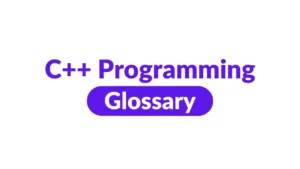Introduction
Welcome to the first part of our C++ course! In this section, we’ll explore the fundamentals of C++, one of the most versatile and powerful programming languages. Whether you’re a complete beginner or have some programming experience, this guide will set you on the right path to becoming proficient in C++.
We’ll cover the history of C++, help you set up a development environment, and guide you through creating your first C++ program.
What is C++ and Its History?
C++ Origins
C++, pronounced “C plus plus,” is an extension of the C programming language. Bjarne Stroustrup created it in the early 1980s at Bell Labs.
The “++” represents the idea of incremental improvement, signifying that C++ was built upon the foundations of C with added features and enhancements.
C++ Features
C++ was designed to provide high-level features like classes and objects, allowing for a more structured and organized approach to programming.
Its rich set of features includes object-oriented programming (OOP), generic programming, and support for low-level memory manipulation.
Setting Up a Development Environment
Choosing a Compiler
To start programming in C++, you need a compiler. Options include GCC (GNU Compiler Collection), Clang, and Microsoft Visual C++. Choose the one that best suits your platform and preferences.
Integrated Development Environments (IDEs)
IDEs like Visual Studio, VS Code, and Code::Blocks provide a user-friendly interface and streamlined development experience.
They often come with code editors, debugging tools, and project management features.
Your First C++ Program: Hello World!
Let’s dive right in! We’ll create a simple “Hello World!” program, a tradition for beginners in programming. You’ll learn how to write code, compile it, and run your first C++ application.
#include <iostream>
using namespace std;
int main() {
cout << "Hello, World!" << endl;
return 0;
}Understanding the Code
- #include <iostream> This line includes the
iostreamlibrary, which is essential for input and output in C++. - using namespace std; This line allows us to use
coutfor output without explicitly mentioningstd::cout. - int main() { … } This is the main function where the program starts execution.
- cout << “Hello, World!” << endl; It prints “Hello, World!” to the console using
cout. - return 0; This line indicates that the program has run successfully and returns an exit code of 0.
Conclusion
In this first part of our C++ course, we’ve explored the history of C++, set up a development environment, and created our first C++ program. You’ve taken the first steps toward becoming proficient in this powerful language.
